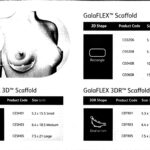Breastfeeding After Breast Enlargement: What You Need to Know
Introduction
Breastfeeding is a natural and essential way to nourish newborns, but for women who have had breast enlargement (whether through implants or other methods), the question of whether breastfeeding is still possible is a common concern. In this article, we will explore the impact of breast enlargement on breastfeeding, the science behind milk production, and important considerations for mothers with breast implants or augmentation surgery.
We will also examine the safety of breastfeeding following breast augmentation, as well as the long-term effects on both the mother and child, using the most current scientific research and expert opinions.
- The Basics of Breastfeeding and Milk Production
Breastfeeding is the process by which a mother provides her infant with breast milk from her mammary glands. The production of milk is primarily driven by the hormones prolactin and oxytocin, which are triggered by the infant’s suckling at the breast.
Milk is produced in the lobules (milk-producing glands) and then transported through ducts to the nipple. While the size of the breast itself doesn’t necessarily correlate with a woman’s ability to produce milk, the functioning of the milk ducts and glands is crucial.
- Does Breast Enlargement Affect Breastfeeding?
2.1. Impact of Breast Implants on Milk Production
Breast augmentation, which typically involves placing silicone or saline implants under the breast tissue or chest muscle, can have varying effects on breastfeeding. The key factor in breastfeeding success is whether the milk ducts and nervesremain intact after surgery.
Under the Muscle vs. Over the Muscle Placement
The placement of breast implants is critical when it comes to breastfeeding.
- Under the muscle (submuscular placement) is generally preferred for those considering breastfeeding after surgery, as it reduces the risk of impeding milk ducts and glandular tissue.
- Over the muscle (subglandular placement) carries a higher risk of disrupting milk ducts or damaging nerve pathways, potentially affecting breastfeeding.
A study published in Aesthetic Surgery Journal (2006) found that women with submuscular implants were more likely to have successful breastfeeding experiences compared to those with subglandular implants (Matarasso, 2006).
Effect of Surgical Incisions
The type of incision used during breast augmentation surgery can also impact breastfeeding. Women who have incisions around the nipple (periareola incision) might experience nipple sensitivity loss or nerve damage, which could affect the baby’s ability to latch properly or reduce milk supply (Bernaix et al., 2006). However, inframammary incisions(under the breast fold) tend to have less impact on breastfeeding success, as they are less likely to interfere with nipple function.
2.2. Risk of Reduced Milk Supply
While most women who undergo breast augmentation can successfully breastfeed, some may experience challenges. Research suggests that breast augmentation does not guarantee a reduced milk supply, but it can make breastfeeding more difficult for some women. The degree of difficulty depends on various factors, including:
- The extent of breast tissue disruption during surgery.
- Whether there was any nerve damage affecting milk production.
- The placement and size of the implants. Larger implants may put more pressure on the glandular tissue, reducing milk production capacity (Lo et al., 2011).
2.3. Breastfeeding Success with Breast Implants
A study published in The Journal of Human Lactation (2015) found that about 93% of women with breast implantsreported successfully breastfeeding, although some had to supplement with formula due to reduced milk supply or latch issues (Hough et al., 2015). The majority of women who had implants were still able to breastfeed, although outcomes varied depending on the individual and the surgical technique used.
- Safety of Breastfeeding After Breast Enlargement
3.1. Are Breast Implants Safe for Breastfeeding?
One of the major concerns among mothers with breast implants is whether breastfeeding is safe for their baby. According to the American Society of Plastic Surgeons, breast implants do not pose a risk to the infant during breastfeeding. The FDA has stated that the materials used in breast implants (silicone and saline) are not harmful to breastfeeding mothers or their children.
The silicone shell of implants is sealed and does not leak, and saline implants are filled with a sterile saline solution, which the body can absorb if there is a rupture. Therefore, milk production and composition are generally unaffected by implants.
3.2. Potential Risks of Implant Rupture
In the rare case of implant rupture, the saline from a saline implant is safe and harmless, while silicone gel implantsmight cause some concern. However, studies show that silicone breast implants do not significantly impact breast milk production (Matarasso, 2006). If an implant rupture occurs, mothers should seek medical advice, but it is unlikely to interfere with breastfeeding.
3.3. Nursing and Breastfeeding Techniques
Mothers with breast implants may face challenges such as nipple sensitivity or reduced lactation. Here are some tips for successful breastfeeding after breast augmentation:
- Ensure proper latch technique: The infant should latch onto the areola (not just the nipple) to stimulate milk production effectively.
- Practice frequent breastfeeding: More frequent nursing encourages higher milk production.
- Monitor your milk supply: Use techniques such as pumping or expressing milk to increase supply if needed.
If breastfeeding proves difficult, consulting a lactation consultant or pediatrician can help optimize the experience.
- Post-Surgery Breast Care and Breastfeeding Tips
4.1. Monitoring Milk Supply and Potential Challenges
Some women may find that their milk supply is lower than expected following breast enlargement surgery. This can be due to the disruption of milk glands or ducts during surgery. If breastfeeding does not seem to provide enough milk, supplementing with formula is a viable option to ensure the baby receives the necessary nutrition.
4.2. Breastfeeding After Surgery: Take Care of Your Body
It’s important for mothers to listen to their bodies after breast surgery:
- Avoid any unnecessary pressure on the breasts.
- Wear a supportive bra to minimize discomfort.
- Practice good hygiene to prevent infections in the breast area.
- Conclusion
Breast enlargement surgery typically does not prevent successful breastfeeding, although the ability to produce milk may be affected depending on the type of surgery, incision, and implant placement. For most women, breastfeeding after breast enlargement is entirely possible, although some may experience challenges with milk supply or nipple sensitivity.
If you have breast implants and are considering breastfeeding, it is essential to consult with both your plastic surgeon and a lactation consultant. Proper planning, knowledge, and support can make breastfeeding a rewarding experience, even after breast augmentation.
References
- Bernaix, L. W., et al. (2006). Nipple Sensitivity and Breastfeeding after Augmentation Mammoplasty. Aesthetic Surgery Journal, 26(2), 176-182.
- Hough, M., et al. (2015). Breastfeeding Outcomes After Augmentation Mammoplasty. Journal of Human Lactation, 31(4), 595-601.
- Lo, T. W., et al. (2011). The Effect of Breast Augmentation on Breastfeeding: A Long-Term Outcome Study. Clinical Plastic Surgery, 38(1), 69-74
- Matarasso, A. (2006). Breast Implants and Breastfeeding: An Evidence-Based Review. Aesthetic Surgery Journal, 26(2), 176-182










